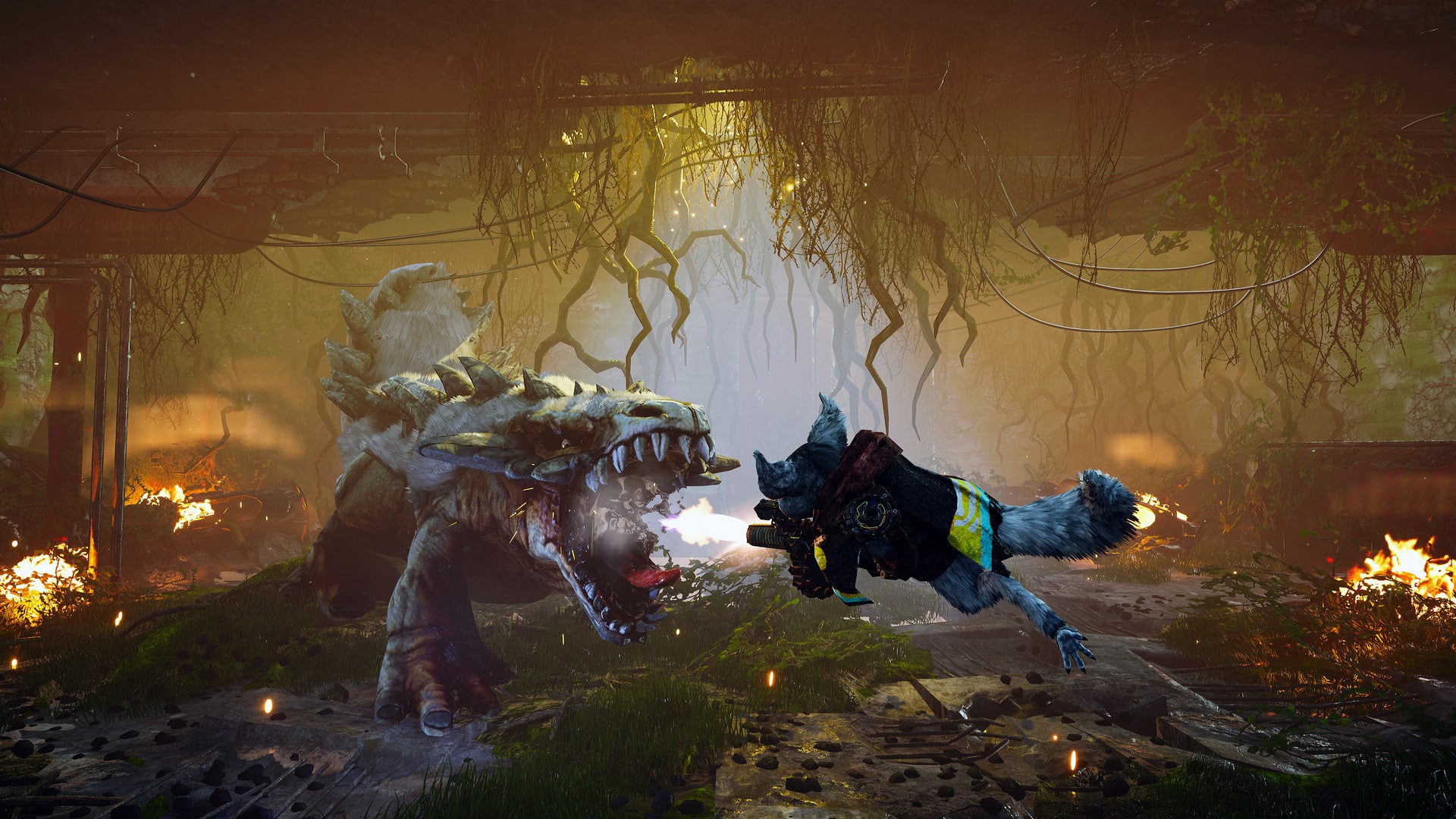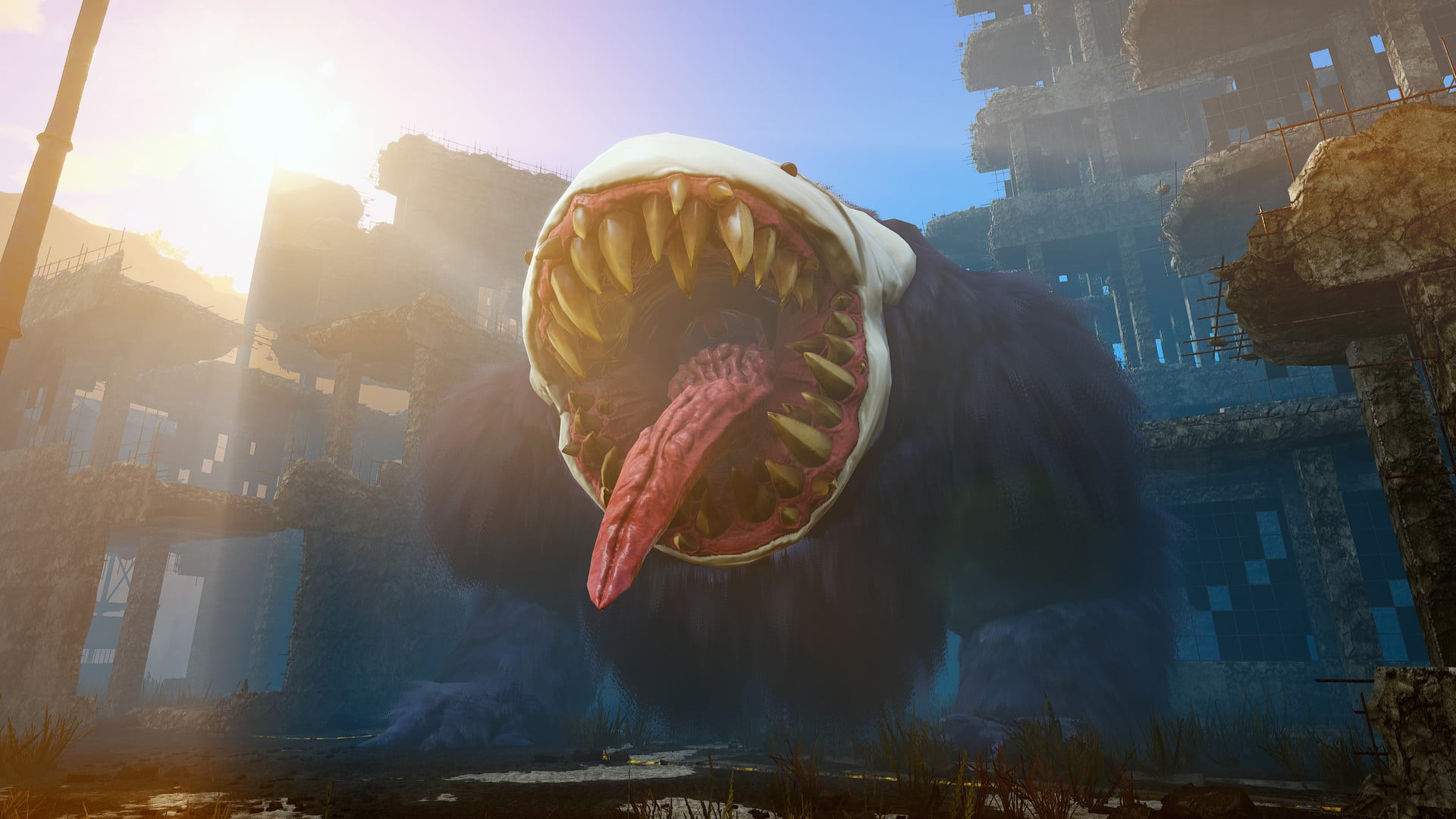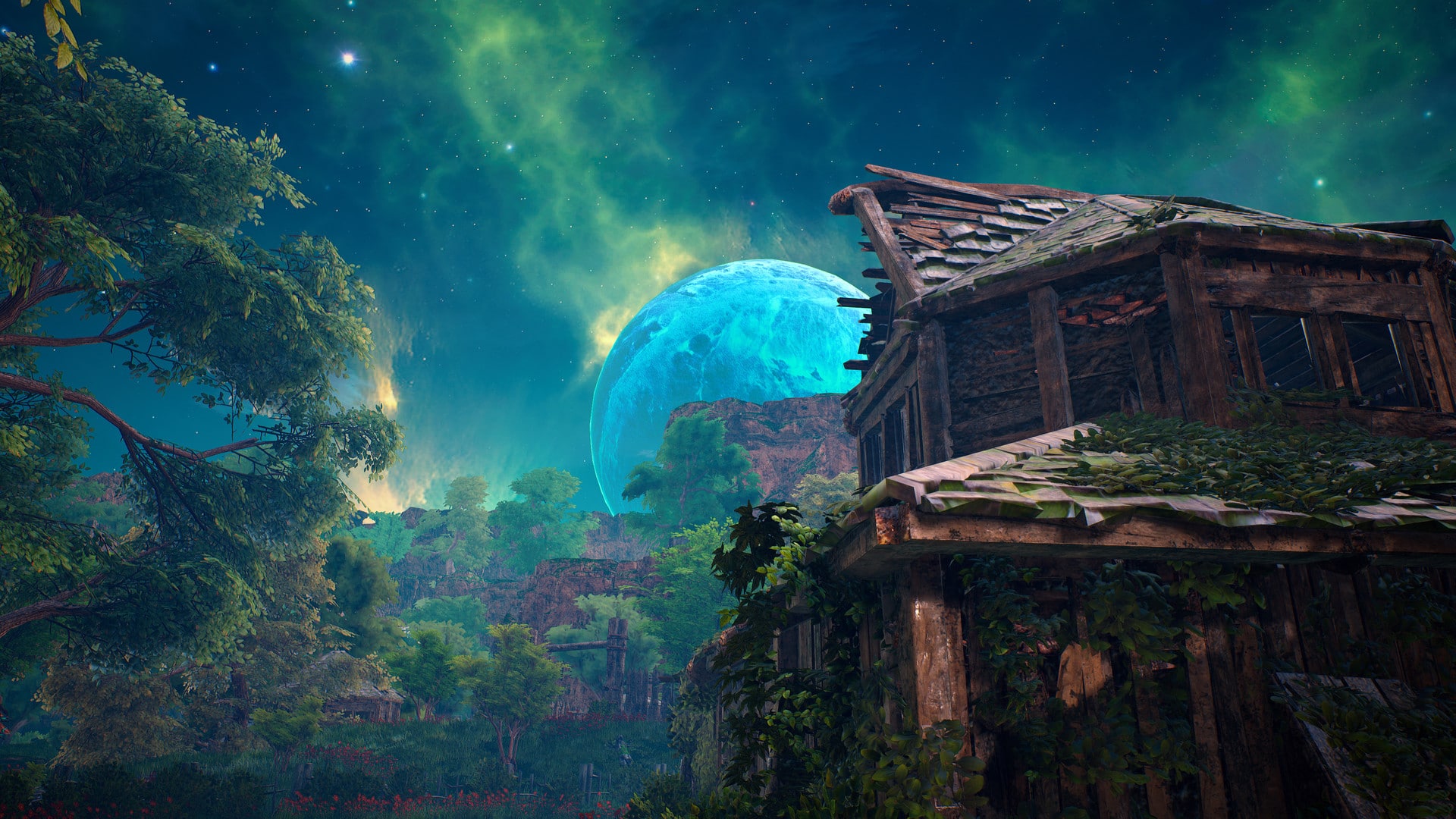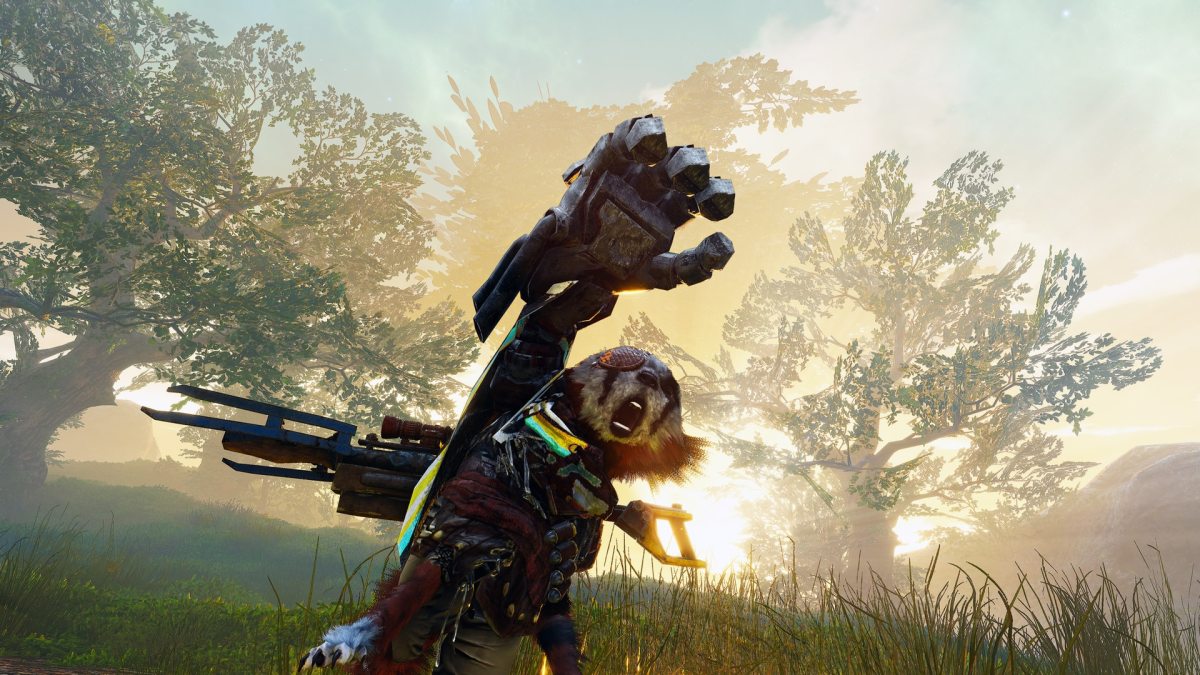There is a lot to like in Biomutant. There is the unique premise: An ecological disaster has wiped out mankind and mutated the local flora and fauna into everything from cute and fluffy sentient raccoons to carnivorous blobs of goo. The animals have inherited the earth, even if their tribal warmongering and tinkering with old-world technology recalls disappointingly human traits.
There is the large and varied open world, backed by unusually vibrant art direction running on an impressive (if demanding) implementation of Unreal Engine 4. It’s traversed with satisfying precision and speed, deftly mixing double jumps through crumbling towns that wouldn’t look out of place in Fallout with four-legged sprints through wide stretches of knee-high grass that recall the post-post-apocalypse of Horizon Zero Dawn.
There is the combat — a mix of “gun fu” combos that can be used to unlock a set of temporary special attacks, quick dashes between enemies, aerial attacks, spells, and slow-motion dives and finishers backed by action RPG systems that recall something of The Legend of Zelda: Breath of the Wild, perhaps a little of Devil May Cry, and even the better aspects of Silicon Knights’ failed Too Human.
However, the reason there is a lot to like is because there is just so much here, and unfortunately not all of it shines quite so brightly or so uniquely. Developer Experiment 101 appears to have taken a scattergun approach: throw as many ideas and influences into the mix as possible and hope that some of them stick. As a result, Biomutant’s strongest traits and promise of originality are frequently drowned in a sea of tonally disparate features borrowed from other games and frustratingly generic open-world tropes.

The Breath of the Wild influence extends beyond combat to Biomutant’s overall structure. Scattered across the four corners of the world map are four world eaters, giant mutated beasts that are busy gnawing away at the roots of the Tree of Life, which sits at the center of the map and promises to revitalize the land if its roots can be saved. Much like Breath of the Wild’s Divine Beasts, the world eaters take up a good two-thirds of Biomutant’s 20-hour main questline.
The remainder is given over to an unconvincing revenge story, a basic morality system strongly reminiscent of the spiritual advisors from Peter Molyneux’s Black & White, a series of outpost capture quests, and a bizarre space ark story that doesn’t go anywhere. It speaks to Biomutant’s broader issues with cohesion and content bloat that one of its most fascinating gadgets — a clockwork reincarnation of The Addams Family’s Thing that can be ridden like a horse or used as a cannon — is buried in the latter half of the game amongst an array of more prosaic vehicles and steeds.
These gadgets and upgrades are handed out by NPCs who work hard to replicate the charm of Breath of the Wild’s characters, but never quite manage it. Whereas the citizens of Hyrule conveyed unique personalities in just a few unvoiced sentences, most of Biomutant’s anthropomorphic animals spout largely the same aphorisms about destiny and putting the world back into balance.

This isn’t helped by an ever-present narrator, who insists not only on translating every line of dialogue from the NPCs’ native gibberish into English, but on narrating world exploration and combat. Mercifully, the frequency of his Fable-like commentary can be turned down or off altogether, but it robs the supporting cast of their own voices.
As if in recognition of the fact that the characters cannot quite hold their own, Experiment 101 has decided to anchor a lot of these interactions around a bespoke vocabulary. The trouble is that it’s less the thematically loaded terminology of something like Pathologic 2 and more the often ridiculed “Tomorrow-morrow Land” language found in Mad Max Beyond Thunderdome. Biomutant’s bunkers are bangshelters, trousers are pantipants, big explosions are bangarangs, and so on. It does little to add more than a layer of cute nonsense to the game.
Mixed in with all this are countless open-world tasks plucked from just about every major open-world game going, from Assassin’s Creed to Monster Hunter. By the end of the main story, my sidequest tab was tracking multiple upgrade types, old gadgets, vaults, noticeboards, resources, captives in need of saving, villages in need of rebuilding, and monsters in need of tracking. There is even a quest to find and use weightlifting equipment. Many of these are gated behind trivial connect-the-dots-style puzzles or hazardous environments that require their own set of fetch quests to complete in order to access safely.

Most of these side activities go towards finding components for an extensive crafting system, which is used to make and improve your gear. The system is surprisingly fine-grained, offering hilt swaps for your sword, add-ons for your shoulder pads, and even different magazines for your guns. But ultimately there is nothing much to distinguish it from other such systems in other open-world games. And while it offers some fairly interesting combinations of weapon and attack types, in its current state it feels unbalanced. Halfway through my playthrough I was able to craft a rifle that dealt so much damage that it reduced the rest of my combat encounters to little more than button-mashing exercises.
I wish Biomutant had found a way to trim the fat and better coordinate its various thematic influences to complement its polished art and world design. As it stands, however, it feels less like an unexpected mutation of the open-world action RPG and more the product of a stagnating gene pool.






Published: May 26, 2021 11:00 am